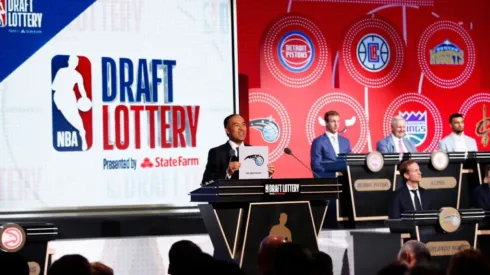NBA Draft night is when scouts and general managers make a living. It’s a breaking point for many executives and teams as its the moment they make the most of their assets to build their team going forward.
Obviously, scouting talents isn’t an exact science and plenty of things can go wrong. Thus, the NBA Draft is always one of the most important moments of the season. It helps teams put together their rosters and even shape up their free agency plans.
But, how do teams get to the process of the Draft? How can a player be eligible for the NBA Draft? How does the league settle the order? In the following paragraphs, we’ll show you everything to know about it:
NBA Class of 2020: The most unusual ever
This will be no ordinary Draft. Scouts and teams will kind of be drafting in the dark as they don’t have as much footage as they usually do because of the NCAA’s tourney suspension. Also, unless they can arrange face-to-face meetings and a combine, they’ll lack some key information about the prospects.
Experts predict teams will lean towards the safest bets this time rather than looking for the players with the most upside. That also means there are going to be plenty of hidden gems in the Draft, as players didn’t have the chance to showcase their talents in the NCAA playoffs.
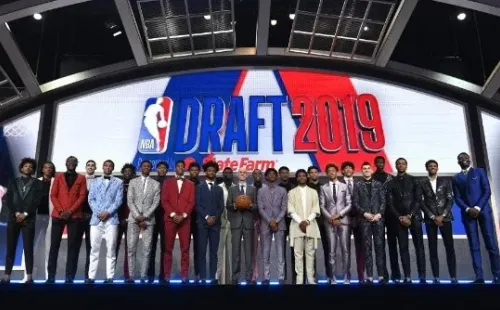
The class of 2019. (Getty)
NBA Draft Lottery:
The Draft lottery usually takes place one or two months before the actual Draft. The 14 teams that didn’t make the playoffs attend the lottery to find out the order of the first 14 picks of the 1st round.
This time, the 6 teams that don’t make the playoffs after the seeding games will join the 8 teams that weren’t invited to theOrlando bubble. The teams with the worst record will have the higher odds to land the 1st overall pick or at least a top-5 pick.
The teams with the three worst records will have the same odds for the 1st overall pick (14%) or staying in the top-4 (52%). The team with the worst record has a 47.9% chance of getting the 5th overall pick, while teams in slots 9-6 have a 20-37% chance of sliding into the top-5.
What teams have the higher odds to land the 1st overall pick this season?
The 8 teams with the worst record in the 2020 season are:
– Golden State Warriors(15-50), 14% odds
– Cleveland Cavaliers(19-46), 14% odds
– Minnesota Timberwolves(19-45), 14% odds
– Atlanta Hawks(20-47), 12.5% odds
-Detroit Pistons(20-46), 10.5% odds
-New York Knicks(21-45), 9% odds
– Chicago Bulls(22-43), 7.5% odds
-Charlotte Hornets(23-42), 6% odds
The Washington Wizards, Phoenix Suns, San Antonio Spurs, Sacramento Kings, New Orleans Pelicans,Portland Trail Blazers, Orlando Magic, Brooklyn Nets, Dallas Mavericks, and Memphis Grizzlies could also join the lottery depending on the seeding games at Orlando.
How does the NBA Draft work?
The Draft has 60 total picks, 30 on the 1st round,and 30 in the second round. Players taken on the 1st round will be eligible for 4-year contracts (2 years guaranteed plus 2 team option years).
The value of their contracts will depend on where the players are taken. Top-5 picks will make more money than non-lottery picks and so it goes, according to the NBA’s rookie-scale structure and the salary caps.
Second-round picks, on the other hand, aren’t assured of those 2 guaranteed years. Teams can pretty much sign him for the amount they want. Also, some players (both from the 1st and 2nd round) can sign two-way contracts to spend most of their time in the NBA’s development league (G-League).
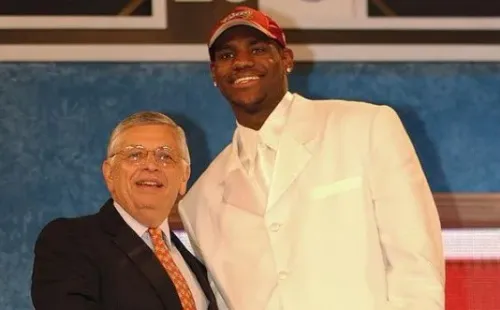
LeBron James was the 1st overall pick in 2003. (Getty)
Which players are eligible to enter the NBA Draft?
All players have to be at least 19 years old during the calendar year of the Draft.They also have to be at least one year removed from their high school graduation, meaning they can spend that year either playing professional basketball overseas or attending an NCAA basketball program.
International players may be eligible to join the NBA Draft if they meet all of these criteria:
– They’ve resided outside of the U.S. for at least 3 years before the Draft while playing basketball outside of the country.
– Have never enrolled in an American college or university
– Didn’t play high school basketball in the U.S.
Other players will be automatically eligible for the NBA Draft if they meet any of these criteria:
– If they graduated from high school in the U.S. but did not enroll in any college or university and are four years removed from their high school class graduation.
– They have completed four years of college eligibility.
– They have signed a contract with a professional basketball team outside of the NBA and have played under that contract.
– Also, those who are at least 19 years old and meet the criteria for international players may be automatically eligible if they’re at least 22 during the calendar year of the Draft or have signed a contract with a professional team outside of the NBA and have played under that contract.
Players who aren’t automatically eligible (i.e, players that are just one year removed from their high school graduation) are considered ‘Early Entry’ players, meaning they must declare for the NBA Draft no later than 60 days before. However, players who declared for the Draft forgo their college eligibility and thus won’t be able to go back to college if they’re not drafted.
Prospects may attend NBA Draft combines and workouts to demonstrate their skills, meet scouts, general managers, and executives. Also, most teams’ staff will measure their physical traits. (vertical leap, wingspan, standing reach, etc.) All of those things will be considered in the drafting process.
It’s also worth noting that being drafted doesn’t force a player to sign with the team right away. International prospects are often drafted and choose to stay at their countries for a couple of seasons before taking their talents to the NBA.
Can undrafted players still play in the NBA?
LeBron James (1st pick), Michael Jordan (3rd pick), Kobe Bryant (13th pick), Bill Russell (2nd pick), Larry Bird (6th pick), and Kevin Garnett (5th pick) are just a handful of the countless superstars that made their way to the NBA through the Draft.
However, there have been plenty of undrafted players that went on to make it to the league anyway. Ben Wallace, Avery Johnson, John Starks, Udonis Haslem, and Bruce Bowen are examples of this.
Players may sign deals as free agents with NBA teams after getting an invitation to their Summer League camps, playing overseas or in the G-League, and still have a long and succesful career in the Association.
Why is the NBA Draft a big deal?
The NBA Draft allows teams to sign top prospects and provide more balance to the league. Those teams that didn’t fare well during the season will get the best players to start contending for the future.
Also, the Draft allows teams to land rising stars at affordable deals rather than spend a lot of money in free agency. Moreover, teams can use their Draft assets (picks, prospects) and trade them for stars or more future picks.
What are the top prospects of this year’s NBA Draft?
Anthony Edwards – SG, Freshman – Georgia

Edwards averaged 19.1 points per game in college. (Getty)
Anthony Edwards is a gifted athlete and explosive scorer whose offense could translate right away to the NBA. He’s got a lot of upside in the defensive end as well thanks to his athleticism, size, and lateral quickness. He’s expected to be this year’s top pick.
LaMelo Ball – PG/SG, INTL
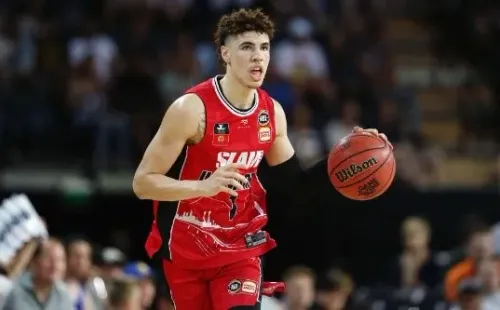
LaMelo’s brother Lonzo plays for the New Orleans Pelicans. (Getty)
LaMelo Ball dominated the high school scene during his time at Chino Hills before taking his talents overseas to Lithuania and Australia. Efficiency and lack of muscle are a concern but he’s got an unlimited range and upside as a scorer and playmaker at the NBA level.
James Wiseman – C, Freshman – Memphis
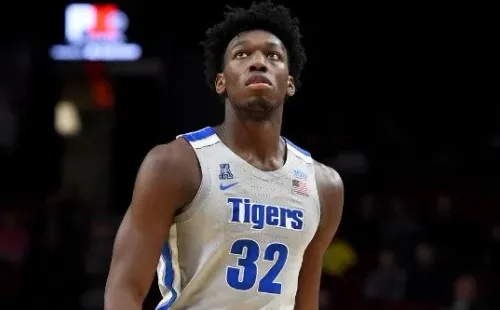
Wiseman blocked 3.0 shots per game in college. (Getty)
James Wiseman was the best prospect of this class entering this year but he withdrew from Memphis University following a suspension and his Draft stock fell. He’s a top-notch athlete and old-school big man that could anchor the paint for a contending team right away.
Other notable prospects include:Obi Toppin,Killian Hayes, Deni Advija,Tyrese Haliburton,Onyeka Okongwu.
